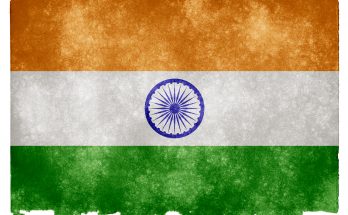The South Korean government has approved a Defense Ministry request to raise the topline defense budget by 4.5 percent nominally year-on-year in 2024. The government intends to submit the budget proposal to the Republic of Korea’s National Assembly on September 1 for final sign-off. If approved, the budget would rise to KRW59.59 trillion ($45 billion) next year from the KRW57.1 billion ($43.1 billion) baseline figure earmarked for 2023.
Under the proposed budget, the Defense Ministry will allocate KRW17.8 trillion ($13.4 billion) toward force modernization (procurement, equipment maintenance/upgrades, and research and development projects), roughly 30 percent of the total figure. This would represent a 5.2 percent increase in the proportion of the budget dedicated to force modernization from the current fiscal year earmark.
For basic operations, the earmark comes to KRW41.79 trillion ($31.5 billion), which would mark a 4.2 percent rise over the allocation for this year.
Also in the budget proposal is an allocation of KRW7.16 trillion ($5.4 billion) dedicated to the country’s nascent three-axis, or “three pillars,” scheme for countering North Korea’s nuclear and missile-strike capabilities.
The three-axis system revolves around three core elements.
The first of these, the “Kill Chain” concept, is aimed at detecting and intercepting incoming missiles in a short timeframe.
The Kill Chain comprises a pre-emptive missile strike system aimed at countering North Korea’s arsenal of ballistic missiles by knocking them out before they are launched. Crucial to the Kill Chain concept are surveillance assets, including military reconnaissance satellites and forward-operating Special Forces trained to take out North Korea’s central command. The firepower capabilities involved in the Kill Chain include a mixture of F-15K tactical strike aircraft equipped with AGM-84E SLAM-ER missiles and GPS-guided Taurus KEPD 350K air-to-ground missiles, and the Hyunmoo family of cruise and ballistic missiles.
Under the proposed FY24 budget, Kill Chain investment will total KRW3.3 trillion ($2.5 billion) covering 24 projects.
The second pillar involves the Korea Air and Missile Defense (KAMD) system, intended to intercept low-flying, short- and medium-range missiles from North Korea. This element includes Patriot Advanced Capability-3 (PAC 3) missiles, medium-range surface-to-air missiles (M-SAMs, also referred to as Cheongung or Iron Hawk), and long-range SAM (L-SAM) systems, as well as early-warning radars.
Finally, there is the third element, the Korea Massive Punishment and Retaliation (KMPR) pillar. This essentially involves an attack against North Korea’s leadership if a nuclear weapon strike by Pyongyang is detected. For such a purpose, the locally developed Hyunmoo 2A, 2B and 3 surface-to-surface ballistic missiles featuring ranges of 300, 500 and 1,000 kilometers would target the North Korean capital of Pyongyang to eliminate the ruling regime.
The proposed FY24 budget includes KRW1.57 trillion ($1.18 billion) toward 11 KAMD projects, plus an extra KRW1.54 trillion ($1.16 billion) in support elements for the three-pronged system, such as a plan to acquire military reconnaissance satellites.
The South Korean Defense Ministry’s five-year mid-term spending plan through 2027 foresees annual increases in the range of 6.8 percent. The total planned spend would amount to KRW331 trillion ($250 billion) if undertaken, an increase of KRW16 trillion from the previous five-year plan covering the years 2022 to 2026.
Dan Darling is Forecast International’s director of military and defense markets. In this role, Dan oversees a team of analysts tasked with covering everything from budgeting to weapons systems to defense electronics and military aerospace. Additionally, for over 17 years Dan has, at various times, authored the International Military Markets reports for Europe, Eurasia, the Middle East and the Asia-Pacific region.
Dan's work has been cited in Defense News, Real Clear Defense, Asian Military Review, Al Jazeera, and Financial Express, among others, and he has also contributed commentary to The Diplomat, The National Interest and World Politics Review. He has been quoted in Arabian Business, the Financial Times, Flight International, The New York Times, Bloomberg and National Defense Magazine.
In addition, Dan has made guest appearances on the online radio show Midrats and on The Media Line, as well as The Red Line Podcast, plus media appearances on France 24 and World Is One News (WION).




